How to implement Redis multi-level cache based on Java
1. Multi-level caching
1. Traditional caching solution
After the request reaches tomcat, it first goes to redis to get the cache. If there is no hit, it goes to mysql to get it
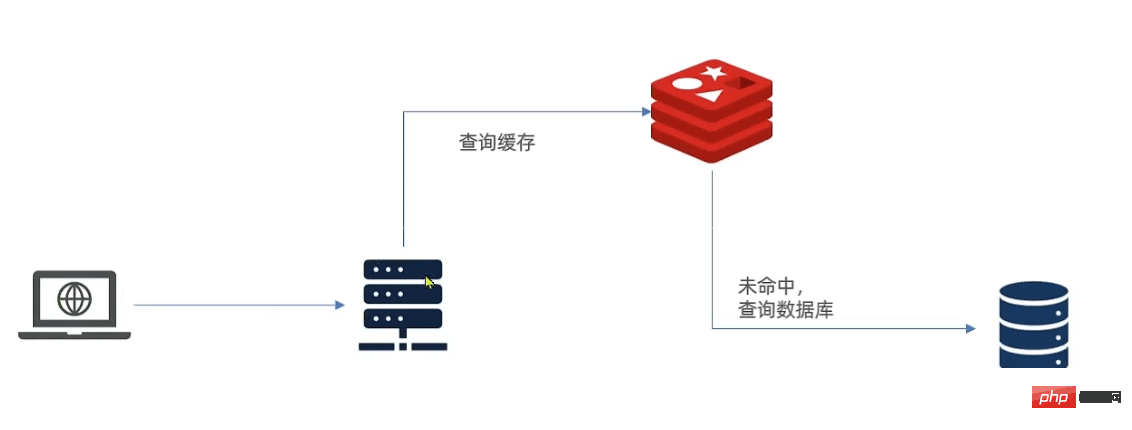
2. Multi-level caching solution
# The number of concurrent requests of tomcatis much smaller than that of redis, so tomcat will become a bottleneckUse each link of request processing to add cache respectively to reduce the pressure on tomcat and improve service performance
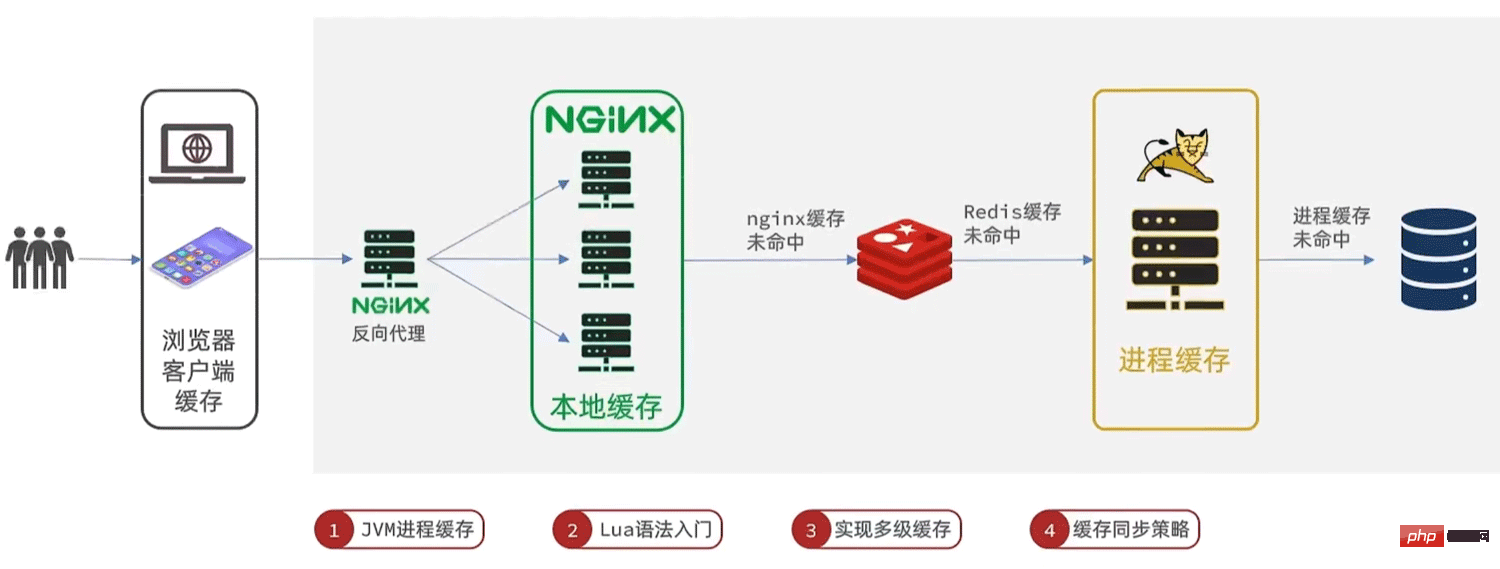
Distributed cache, Such as redis- Advantages: Large storage capacity, good reliability, can be shared in the cluster
- Disadvantages: There is network overhead for accessing the cache
- Scenario: Large amount of cached data, high reliability, needs to be in the cluster Shared data in
Process local cache, such as HashMap, GuavaCache1. Practical case- Advantages: Reading local memory, no network overhead, faster
- Disadvantages: Storage capacity Limited, low reliability (such as lost after restarting), cannot be shared in the cluster
- Scenario: high performance requirements, small amount of cached data
- Caffeine is a high-performance local cache library developed based on java8 that provides nearly the best hit rate.
- This is currently used for the internal cache of spring
<dependency>
<groupId>com.github.ben-manes.caffeine</groupId>
<artifactId>caffeine</artifactId>
<version>3.0.5</version>
</dependency>package com.erick.cache;
import com.github.benmanes.caffeine.cache.Cache;
import com.github.benmanes.caffeine.cache.Caffeine;
import java.time.Duration;
public final class CacheUtil {
private static int expireSeconds = 2;
public static Cache<String, String> cacheWithExpireSeconds;
private static int maxPairs = 1;
public static Cache<String, String> cacheWithMaxPairs;
static {
/*过期策略,写完60s后过期*/
cacheWithExpireSeconds = Caffeine.newBuilder()
.expireAfterWrite(Duration.ofSeconds(expireSeconds))
.build();
/*过期策略,达到最大值后删除
* 1. 并不会立即删除,等一会儿才会删除
* 2. 会将之前存储的数据删除掉*/
cacheWithMaxPairs = Caffeine.newBuilder()
.maximumSize(maxPairs)
.build();
}
/*从缓存中获取数据
* 1. 如果缓存中有,则直接从缓存中返回
* 2. 如果缓存中没有,则去数据查询并返回结果*/
public static String getKeyWithExpire(String key) {
return cacheWithExpireSeconds.get(key, value -> {
return getResultFromDB();
});
}
public static String getKeyWithMaxPair(String key) {
return cacheWithMaxPairs.get(key, value -> {
return getResultFromDB();
});
}
private static String getResultFromDB() {
System.out.println("数据库查询");
return "db result";
}
}package com.erick.cache;
import java.util.concurrent.TimeUnit;
public class Test {
@org.junit.Test
public void test01() throws InterruptedException {
CacheUtil.cacheWithExpireSeconds.put("name", "erick");
System.out.println(CacheUtil.getKeyWithExpire("name"));
TimeUnit.SECONDS.sleep(3);
System.out.println(CacheUtil.getKeyWithExpire("name"));
}
@org.junit.Test
public void test02() throws InterruptedException {
CacheUtil.cacheWithMaxPairs.put("name", "erick");
CacheUtil.cacheWithMaxPairs.put("age", "12");
System.out.println(CacheUtil.getKeyWithMaxPair("name"));
System.out.println(CacheUtil.getKeyWithMaxPair("age"));
TimeUnit.SECONDS.sleep(2);
System.out.println(CacheUtil.getKeyWithMaxPair("name")); // 查询不到了
System.out.println(CacheUtil.getKeyWithMaxPair("age"));
}
}- to the cache Set the validity period and automatically delete it after expiration. It can be updated when querying again
- Advantages: simple and convenient
- Disadvantages: poor timeliness, the cache may be inconsistent before it expires
- Scenario: Business with low update frequency and low timeliness requirements
- When modifying the database At the same time, directly modify the cache
- Advantages: code intrusion, strong consistency between cache and database
- Disadvantages: code intrusion, high coupling
- Scenario: Cache data with high consistency and invalidity requirements
- Send an event notification when the database is modified, and the relevant services modify the cached data after listening to it
- Advantages: low coupling, multiple cache services can be notified at the same time
- Disadvantages: Timeliness is limited, there may be cache inconsistency issues
- Scenario: Timeliness is average, there are multiple services that need to be synchronized
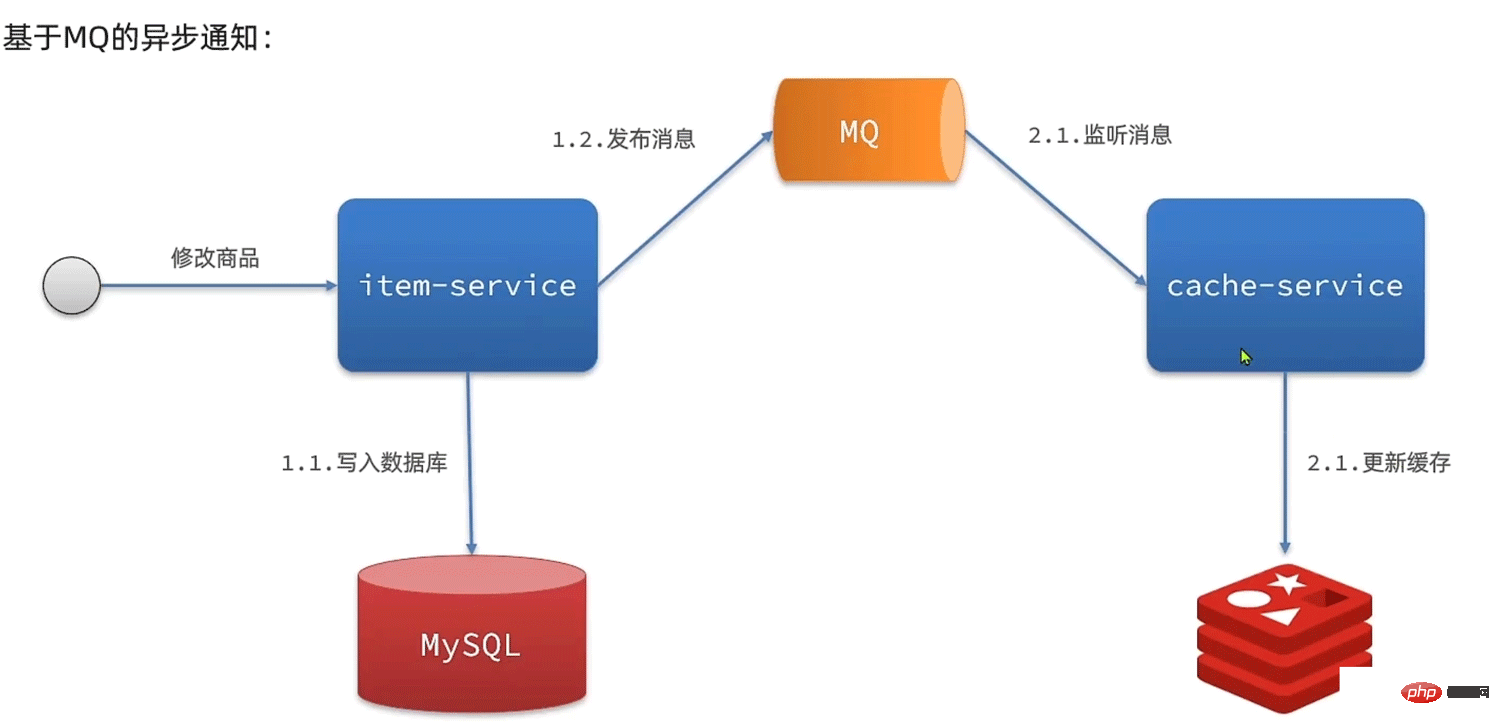
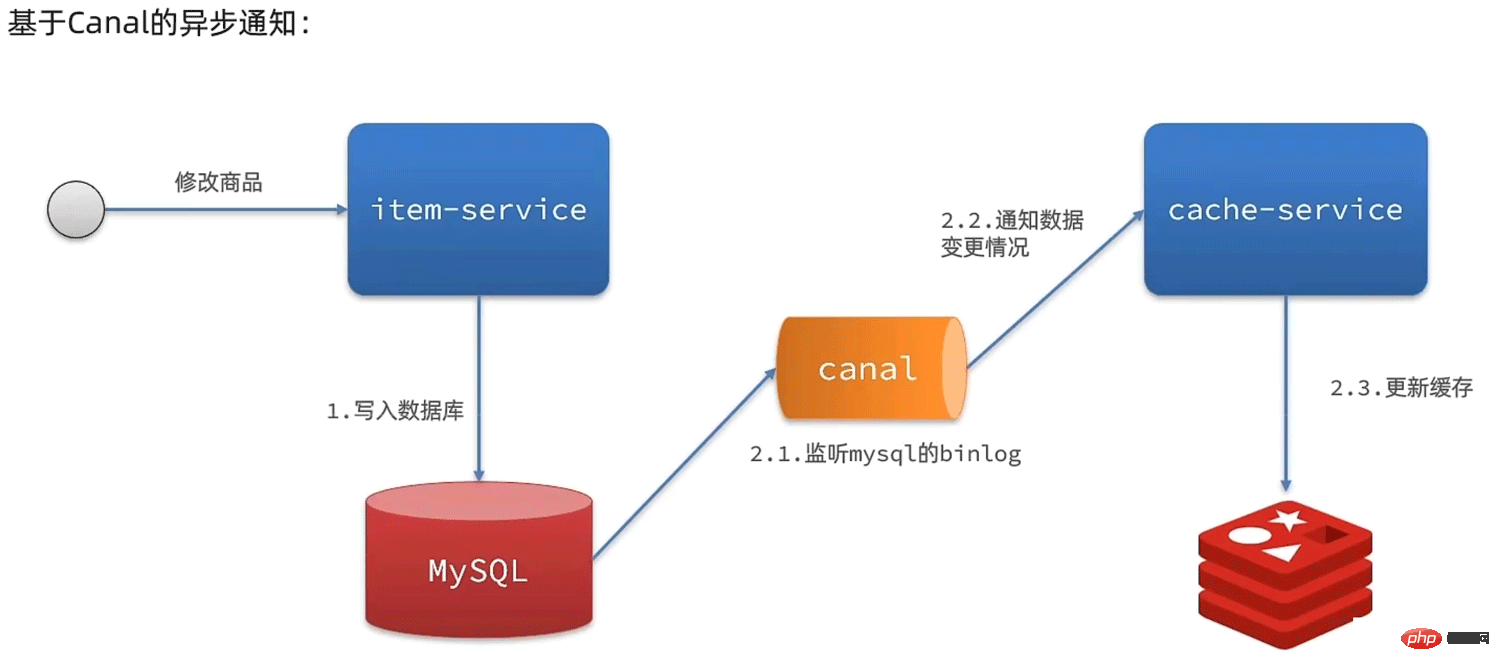
- is an open source project under Alibaba, based on java Development
- Based on database incremental log analysis, providing incremental data subscription and consumption
- The idea of master-slave backup based on mysql
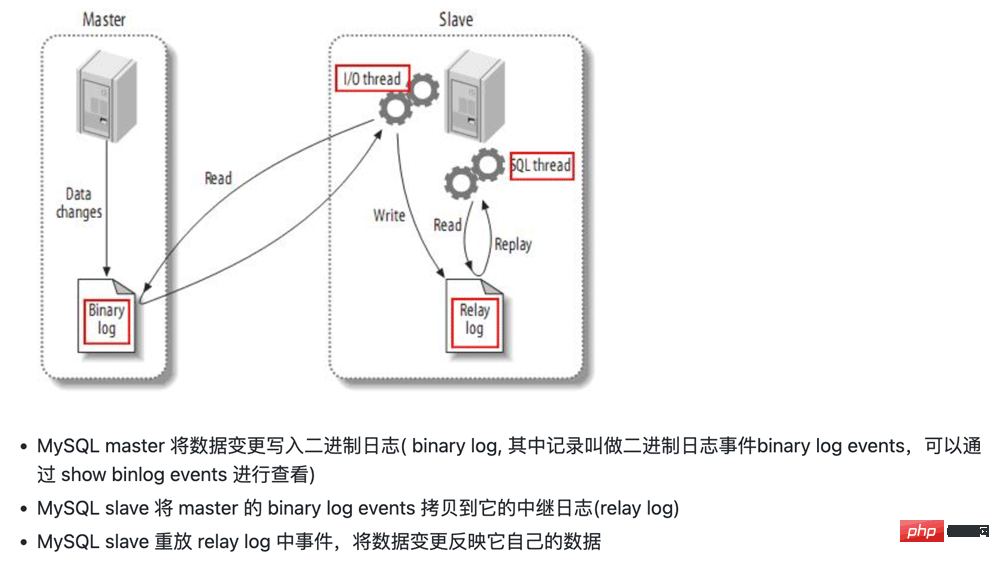
- canal simulates MySQL slave Interactive protocol, pretending to be a MySQL slave, sending dump protocol to MySQL master
- MySQL master receives the dump request and starts pushing the binary log to the slave (i.e. canal)
- canal parses the binary log object (originally a byte stream)
The above is the detailed content of How to implement Redis multi-level cache based on Java. For more information, please follow other related articles on the PHP Chinese website!

Hot AI Tools

Undresser.AI Undress
AI-powered app for creating realistic nude photos

AI Clothes Remover
Online AI tool for removing clothes from photos.

Undress AI Tool
Undress images for free

Clothoff.io
AI clothes remover

AI Hentai Generator
Generate AI Hentai for free.

Hot Article

Hot Tools

Notepad++7.3.1
Easy-to-use and free code editor

SublimeText3 Chinese version
Chinese version, very easy to use

Zend Studio 13.0.1
Powerful PHP integrated development environment

Dreamweaver CS6
Visual web development tools

SublimeText3 Mac version
God-level code editing software (SublimeText3)

Hot Topics
 Break or return from Java 8 stream forEach?
Feb 07, 2025 pm 12:09 PM
Break or return from Java 8 stream forEach?
Feb 07, 2025 pm 12:09 PM
Java 8 introduces the Stream API, providing a powerful and expressive way to process data collections. However, a common question when using Stream is: How to break or return from a forEach operation? Traditional loops allow for early interruption or return, but Stream's forEach method does not directly support this method. This article will explain the reasons and explore alternative methods for implementing premature termination in Stream processing systems. Further reading: Java Stream API improvements Understand Stream forEach The forEach method is a terminal operation that performs one operation on each element in the Stream. Its design intention is
 Create the Future: Java Programming for Absolute Beginners
Oct 13, 2024 pm 01:32 PM
Create the Future: Java Programming for Absolute Beginners
Oct 13, 2024 pm 01:32 PM
Java is a popular programming language that can be learned by both beginners and experienced developers. This tutorial starts with basic concepts and progresses through advanced topics. After installing the Java Development Kit, you can practice programming by creating a simple "Hello, World!" program. After you understand the code, use the command prompt to compile and run the program, and "Hello, World!" will be output on the console. Learning Java starts your programming journey, and as your mastery deepens, you can create more complex applications.
 Java Made Simple: A Beginner's Guide to Programming Power
Oct 11, 2024 pm 06:30 PM
Java Made Simple: A Beginner's Guide to Programming Power
Oct 11, 2024 pm 06:30 PM
Java Made Simple: A Beginner's Guide to Programming Power Introduction Java is a powerful programming language used in everything from mobile applications to enterprise-level systems. For beginners, Java's syntax is simple and easy to understand, making it an ideal choice for learning programming. Basic Syntax Java uses a class-based object-oriented programming paradigm. Classes are templates that organize related data and behavior together. Here is a simple Java class example: publicclassPerson{privateStringname;privateintage;
 Java Program to Find the Volume of Capsule
Feb 07, 2025 am 11:37 AM
Java Program to Find the Volume of Capsule
Feb 07, 2025 am 11:37 AM
Capsules are three-dimensional geometric figures, composed of a cylinder and a hemisphere at both ends. The volume of the capsule can be calculated by adding the volume of the cylinder and the volume of the hemisphere at both ends. This tutorial will discuss how to calculate the volume of a given capsule in Java using different methods. Capsule volume formula The formula for capsule volume is as follows: Capsule volume = Cylindrical volume Volume Two hemisphere volume in, r: The radius of the hemisphere. h: The height of the cylinder (excluding the hemisphere). Example 1 enter Radius = 5 units Height = 10 units Output Volume = 1570.8 cubic units explain Calculate volume using formula: Volume = π × r2 × h (4
 How to Run Your First Spring Boot Application in Spring Tool Suite?
Feb 07, 2025 pm 12:11 PM
How to Run Your First Spring Boot Application in Spring Tool Suite?
Feb 07, 2025 pm 12:11 PM
Spring Boot simplifies the creation of robust, scalable, and production-ready Java applications, revolutionizing Java development. Its "convention over configuration" approach, inherent to the Spring ecosystem, minimizes manual setup, allo
 Why does an error occur when installing an extension using PECL in a Docker environment? How to solve it?
Apr 01, 2025 pm 03:06 PM
Why does an error occur when installing an extension using PECL in a Docker environment? How to solve it?
Apr 01, 2025 pm 03:06 PM
Causes and solutions for errors when using PECL to install extensions in Docker environment When using Docker environment, we often encounter some headaches...
 Java Program to insert an element at the Bottom of a Stack
Feb 07, 2025 am 11:59 AM
Java Program to insert an element at the Bottom of a Stack
Feb 07, 2025 am 11:59 AM
A stack is a data structure that follows the LIFO (Last In, First Out) principle. In other words, The last element we add to a stack is the first one to be removed. When we add (or push) elements to a stack, they are placed on top; i.e. above all the
 Compilation and installation of Redis on Apple M1 chip Mac failed. How to troubleshoot PHP7.3 compilation errors?
Mar 31, 2025 pm 11:39 PM
Compilation and installation of Redis on Apple M1 chip Mac failed. How to troubleshoot PHP7.3 compilation errors?
Mar 31, 2025 pm 11:39 PM
Problems and solutions encountered when compiling and installing Redis on Apple M1 chip Mac, many users may...






